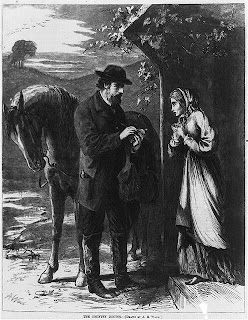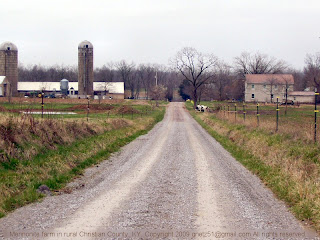A scrap of Western Kentucky history
Tonight at work, an elderly gentleman told me about an old book he owns. It's an antique paperback -- I think he said it has 60 pages -- and it's deteriorating. He wants his son, a chiropractor, to scan it and preserve it digitally.
The book describes the life and medical practice of Dr. Jesse Beck, a physician of the Civil War era in Woodville, KY. It was written by Beck's grandson.
My customer told me a little about the doctor as described in the book. Dr. Beck was a holistic physician; he believed that the health of body, mind, and spirit are interdependent.
Dr. Beck was also an herbalist who concocted many of his own medicines. Every year, he traveled to a distant city herbal market and bought back herbs from all over the world. One of his most popular and effective remedies was an herbal emetic; patients took the medicine and vomited out any poisons threatening their health.
After I got home tonight, I looked for information about Dr. Jesse Beck on the internet. I found him mentioned twice in History and Families, McCracken County, Kentucky, 1824-1989. The book's section on Woodville history says that Dr. Beck came to Woodville, KY, in 1852 from Todd County, KY.
 The McCracken County history book mentions Dr. Beck again in the life history of Walter Elmo Jenkins. (Jenkins's wife, Alma, was Dr. Beck's niece.) Dr. Beck is described as a "botanic doctor" who was living near Woodville in December,1852, in a cabin with a split log floor and a few basic pieces of furniture.
The McCracken County history book mentions Dr. Beck again in the life history of Walter Elmo Jenkins. (Jenkins's wife, Alma, was Dr. Beck's niece.) Dr. Beck is described as a "botanic doctor" who was living near Woodville in December,1852, in a cabin with a split log floor and a few basic pieces of furniture.For lack of a better image and more information, I'll imagine Dr. Beck as "The Country Doctor", in the old print that we, the people of the United States, keep at the Library of Congress.






























